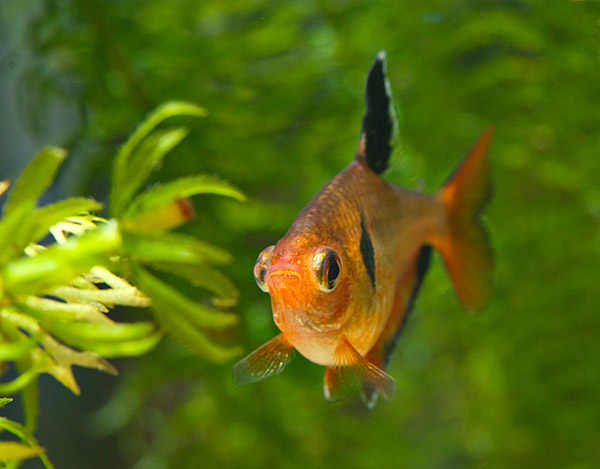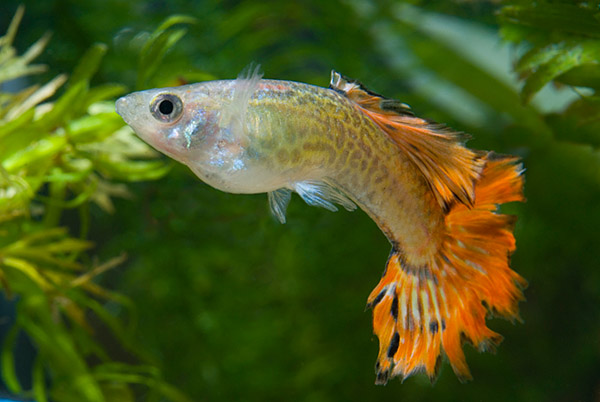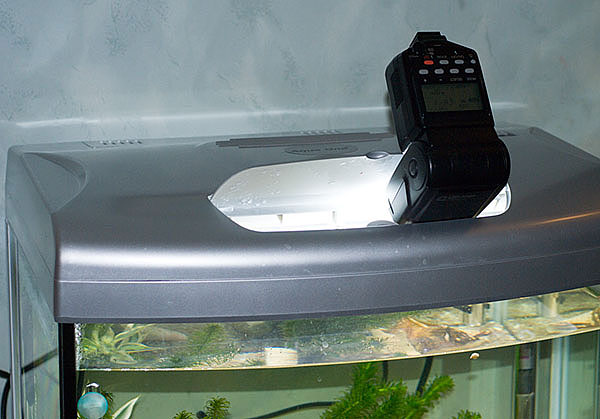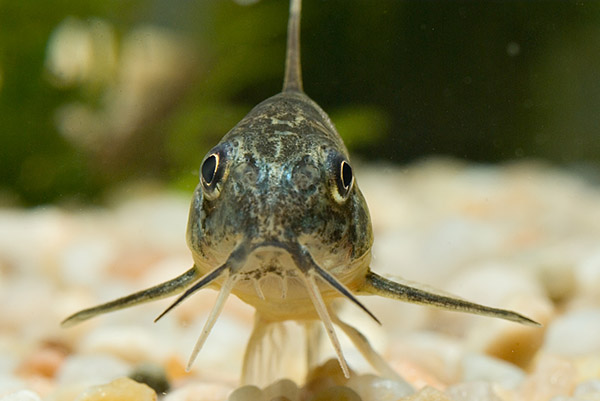Wireless flash home aquarium shots
IT IS not a good idea to have flash cables trailing around an aquarium, and the typical home setup will not be suitable for available light shooting unless you keep very slow moving large fish – however bright the lights in some commercial tanks may be. Small, darting fish like tetras or guppies need catching with good depth of field and flash to help freeze any sudden movement. But you can’t use flash on camera, or the pop-up flash, because it will reflect in the glass and from particles suspended in the water.

Before shooting, I made sure that the water was as clean and clear as possible and ran an external filter for a while. This was a newly loaded aquarium with clean fresh gravel too. New plants were added to the tank a day or two before, and positioned to hide pumps and heaters. I very quickly found that the 100mm macro lens used for the shot above gave the best sharpness at f/11, and lost definition from f/16 down. And if the fish was facing the camera, like the Serpae Tetra above, there would never be enough depth of field for it to be sharp head to tail. The longer working distance and narrow field of the 100mm also made it hard to get the fish framed well.
For trouble-free light, what is needed is flash coming from outside the aquarium, not from the camera angle. Here the wireless remote flash of the Sony-Minolta Alpha system can be very useful. With no trailing cables, the main flash can be positioned where you want. The pop-up flash fires, but only to control the remote unit. During the instant of remote exposure, the pop-up is ‘silent’ – all its flash bursts are control signals, and take place before the final exposure from the wireless flash. Even if it is aimed at the glass, you don’t get a reflection.

With a fish aligned side-on to the camera, you not only show a more classical view of the colouring and form of the fish, but everything can be sharp. The 50mm macro AF used for the male guppy shot above lost a tiny bit of sharpness at f/16 but this was acceptable to obtain a better rendering of the tail. Having no cables for the flash allowed me to move round quickly to follow the angle of the fish and catch the best shot.
The Minolta wireless flash models 5600 HS (D) or 3600 HS (D) and their Sony equivalents are set to be triggered by the built-in flash of your SLR by fitting and removing the gun after setting the camera via the rear LCD screen to wireless mode. Once removed, the remote flash will provide the light, and the built-in flash only serves to control it. You can not set the flash to wireless mode manually and over-ride existing settings on the camera that way. It is the camera which must be set to Wireless first. Then you mount the flash, switch on, and remove the flash. It is now synchronised with the control from the pop-up flash.

All the light for these aquarium shots came from a 3600 HS (D) unit popped into the aquarium’s feeding hatch as shown. The light is not as directional as you would imagine; the inside walls of the aquarium bounce it round, and you end up with very even illumination. It does not seem to matter in the small aquarium set-up shown whether the flash is close to the camera, or further along when shooting from one end. It proved better to shoot through the ends of the tank, which are flat, rather than the curved front. However, if the fish was very close to the curved glass like this Peppered Catfish, results were sharp enough.

He’s a very small fish, photographed very close at f/16 with the 50mm, at ISO 200.
The best results were from the 50mm macro, with the A100 set to ISO 200 or 400, and the aperture to f/11 or f/16. Wider apertures don’t give enough depth of field, smaller ones begin to lose sharpness due to diffraction effects, and ISO 100 meant underexposure. Anything faster than ISO 400 with the A100 was a little grainy and involved too much stopping down. The 100mm macro seemed more affected by the glass (not exactly optical quality) and by diffraction effects making the image soft at f/16.
– David Kilpatrick
